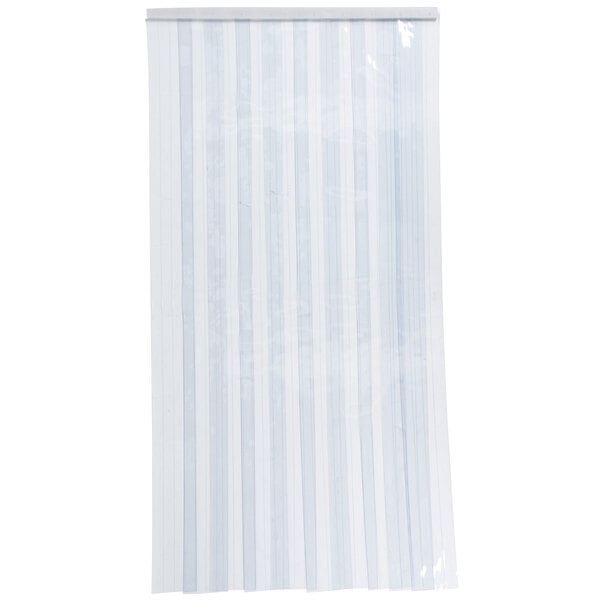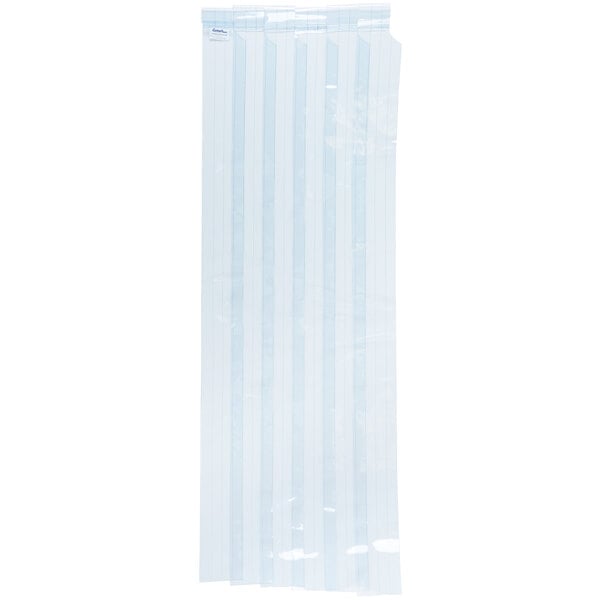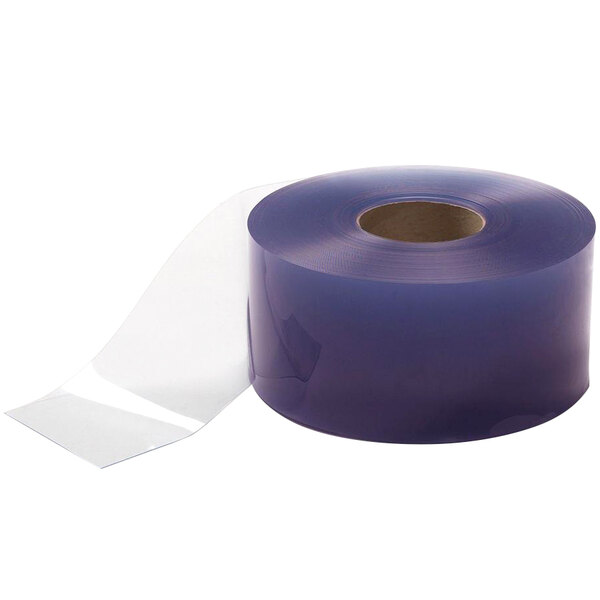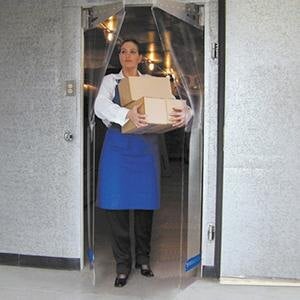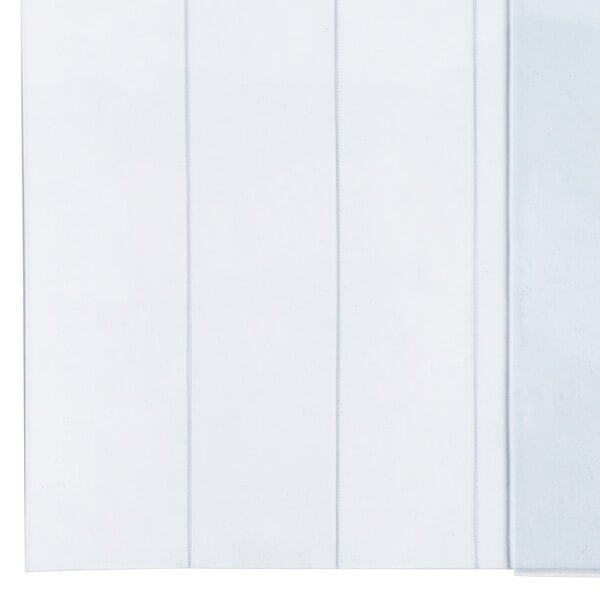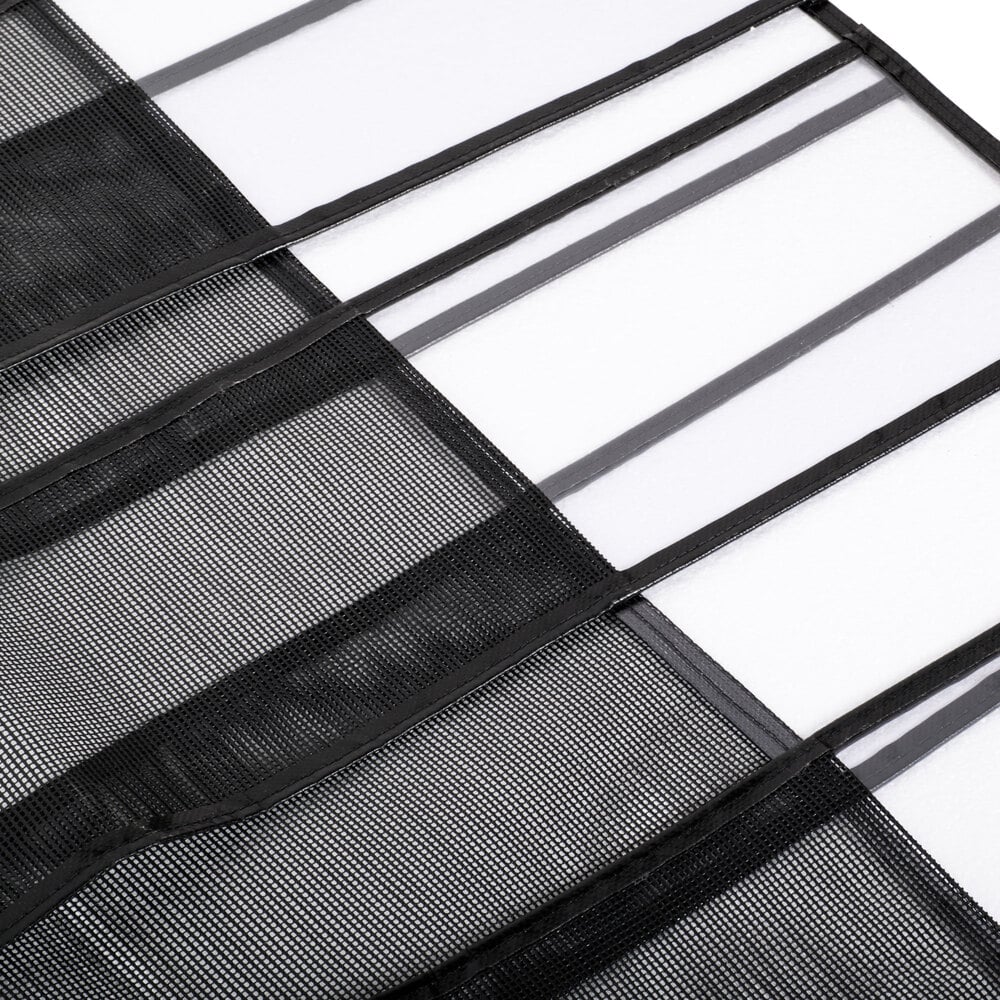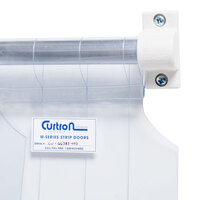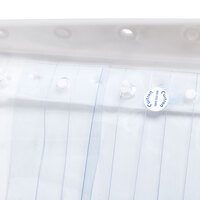Perhaps after browsing our selection of strip doors, you've decided that buying a roll of material and creating your own customized strip door is the best option for you. Follow these steps to create a tailor-made strip door without the fear of wasting material!
1. Measure your door opening.
In addition to recording the dimensions of the doorway, it's important to note anything that may hinder the installation of the door like space limitations on either side of the door or obstructions within the door frame.
2. Determine how wide the strips need to be.
Consider what type of traffic will be moving through the door. For personnel, carts, and general traffic, 6"-8" wide strips will work fine. Larger equipment and industrial-type traffic should use 12"-16" wide strips. Check out the chart below for some guidelines on choosing the right width.
Door Height |
Exterior Door/Heavy Traffic |
Interior Door/Light Traffic |
|
Strip Width |
Strip Thickness |
Strip Width |
Strip Thickness |
7' |
|
|
4"-6" |
.060" |
8' |
8" |
.080" |
|
|
10' |
|
|
8" |
.080" |
12' |
12" |
.120" |
|
|
14' |
|
|
12" |
.120" |
16' |
16" |
.160" |
|
|
18' |
|
|
16" |
.160" |
3. Decide how much overlap you want between strips.
If you're installing an exterior door, it's best to go with 100% overlap to protect against inclement weather and wind. Indoor applications can generally get away with 25%, 50%, or 75% overlap.
4. Determine the linear footage of PVC strip needed for your application.
Find the strip width you chose on the chart below, and cross reference against the percentage of overlap you want to get the "multiplying factor."
Multiplying Factors |
Strip Width |
25% |
50% |
75% |
100% |
4" |
|
4 |
|
6 |
6" |
|
|
|
4 |
8" |
1.75 |
2 |
2.5 |
3 |
12" |
|
1.35 |
|
2 |
16" |
.875 |
1 |
1.2 |
1.5 |
Then, follow these instructions to determine the amount of material you will need to create your custom strip door. This calculation gives you the answer in linear footage so you know how long of a roll you should buy to complete your project. In the example below, you would need a roll at least 104' long to create a strip door to cover your door opening.
Instructions |
Multiply the door width (') by the multiplying factor you found in the table above. |
Add 1 to get the total number of strips you need (adding an additional strip accounts for edge exposure). |
Multiply the total number of strips by your door height (') to get the total linear footage of PVC strip needed. |
Example (4'W x 8'H door with 8" strips and 100% overlap) |
4' x 3 = 12 |
12 + 1 = 13 |
13 x 8' = 104' |
5. Identify the best strip material for your application.
The type of strip you need to purchase is entirely dependent on where you will place the strip door. For example, if you're installing the door into a freezer, you will need to purchase a low temperature strip. If visibility is important because you're placing it in a high traffic area, then a standard, clear PVC strip is the perfect choice.
6. Consider how you will mount the strip door.
There are a variety of ways that you can mount your strip door, and while the most common ways are wall or in-jamb mounts, there are others to consider listed in the chart below!



